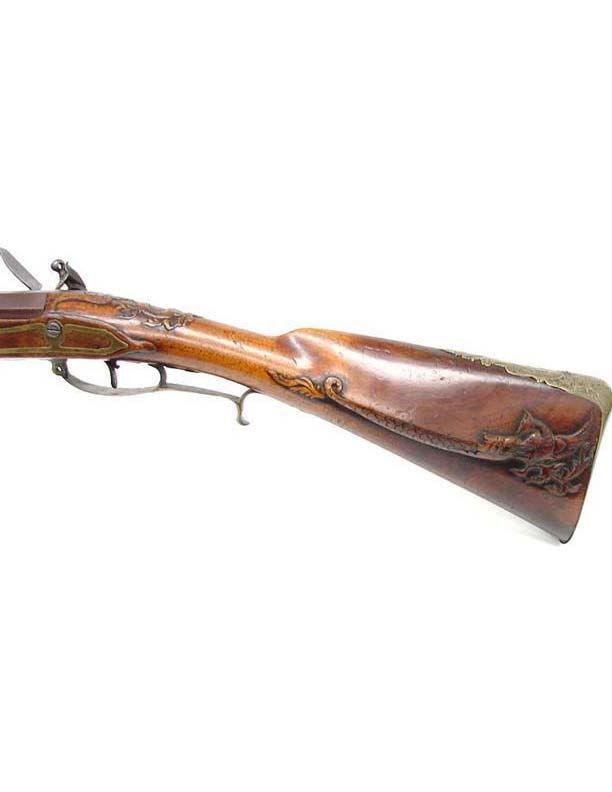Capt. Jas.
58 Cal.
- Joined
- Aug 19, 2005
- Messages
- 3,049
- Reaction score
- 1,352
So how many pre 1760's guns were American made as opposed to imported? How much building was going on then vs. repair and maybe restoring?

Capt. Jas. said:So how many pre 1760's guns were American made as opposed to imported? How much building was going on then vs. repair and maybe restoring?
Rich Pierce said:Pure speculation/blind reasoning, but if there were 500-2000 rifles (pick a number) in the 1740s in native American hands, there were not enough rifle-making gunsmiths anywhere in the colonies to provide them with rifles, and also make a few for local sales. The output of Christian Oerter in the mid 1760's to mid 1770's was around 16 rifles per year in a well known, established shop with plenty of existing specimens surviving, several of them having returned from Europe where they were taken during the Revolutionary War. The 1740's were 2 score years earlier. Seems unlikely production rates were higher, earlier. If we do the math, we need 7 riflesmith-years for every hundred rifles produced here. Makes importation of whole rifles seem likely to have been very important. Almost all the trade goods getting into native American hands were imported. ALL the smoothbore trade guns getting into native American hands pre-1770 were imported. Draw your own conclusions, if any can be made from such ramblings. All I can say is "unless rifles were different from all other trade goods, the ones traded to native Americans pre-1770 were primarily imported".
Dan Phariss said:The next question would be when did barrel forging start in America.
Dan
Rich Pierce said:Seems surprising more is known of early Lehigh, Northampton, Allentown, Lancaster gunsmiths.
Rich Pierce said:Took me a while but I found a picture of a Germanic Europen original rifle with a curvaceous buttstock. A real dandy; might be 1760's or 1770's, Stophel would know better than I do. Note how similar the long wrist is to the Bucks County style. Just shows the Bucks county rifle incorporated features already around even in Europe. No ancestral relationship proposed.

Rich Pierce said:Draw your own conclusions, if any can be made from such ramblings. All I can say is "unless rifles were different from all other trade goods, the ones traded to native Americans pre-1770 were primarily imported".
Enter your email address to join: